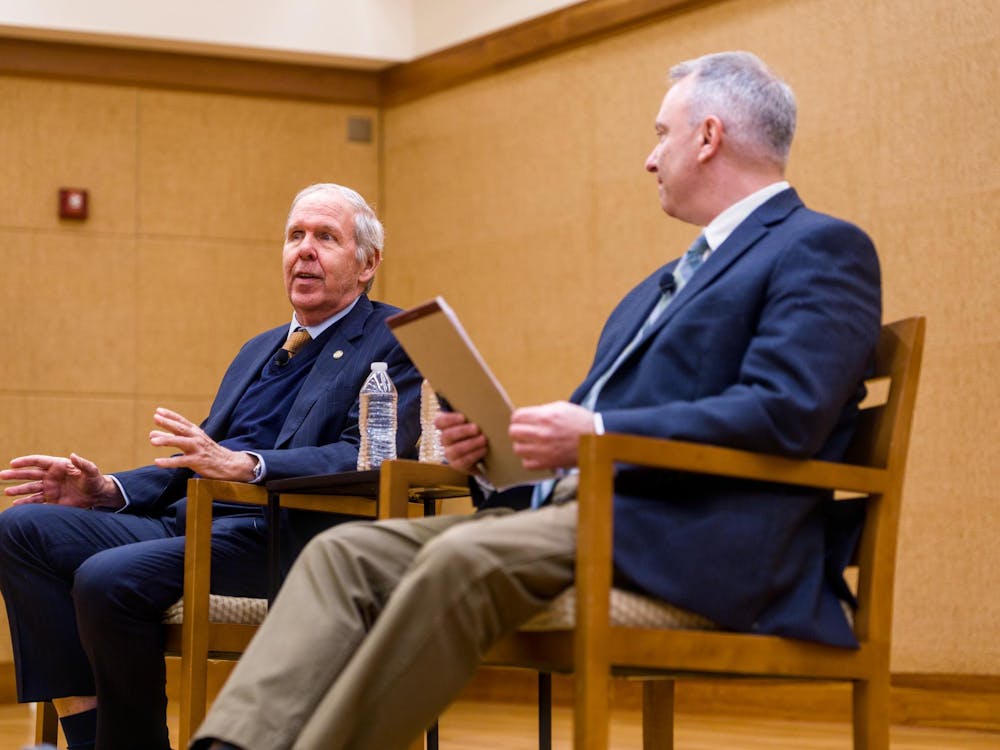Gov. Bob McDonnell released a statement Tuesday announcing the Virginia Marine Resources Commission (VMRC) unanimously approved plans for the construction of an offshore wind turbine in the lower Chesapeake Bay, near Cape Charles, Va.
"[The turbine] will mean new jobs, economic development and a new clean energy source," McDonnell spokesperson Jeff Caldwell said. "Already, there are more than 220 companies in the supply chain for wind energy projects that will benefit."
The turbine is scheduled to be completed in late 2013, and is expected to last 20 years or more.
"This is an important next step in developing all of Virginia's domestic energy resources to help power our nation's economy, and puts Virginia at the forefront of clean energy technology development," McDonnell said.
Gamesa Energy USA submitted the proposal in partnership with Huntingon Ingalls Newport News Shipbuilding. The two groups aim to develop and test new offshore wind technologies. The project aims to "advance the demonstration of Gamesa Energy USA, LLC's new offshore WTG technology, the G11X, specifically designed for deployment in offshore wind environments worldwide," according to the press release.
The project is not intended to be a major energy source, but the wind turbine prototype will still create "up to five megawatts of clean, renewable wind power for public use," according to the press release.
The tip of the turbine will stand 479 feet above sea level, with a 15,219 foot power cable submerged six feet below the seabed to connect the turbine to the Cape Charles electrical grid.
"The Chesapeake Bay allows for a good test environment with strong winds, shallow waters and, because it is in state-controlled waters, fewer regulatory hurdles from the federal government," Caldwell said. "Hampton Roads also has a concentration of the expertise, workforce and supplies needed to develop this kind of energy."
The agency received no objections from the public and there was no controversy about the project, according to the press release.
VMRC approved the wind turbine on the condition Gamesa post a bond of at least $2.1 million to pay for removing the turbine if it is decommissioned, as well as payment of $52,667 for use of the state-owned seafloor.
Gamesa also needs to complete a comprehensive scientific study of the turbine's potential impact on marine life, investigating a variety of wind and weather conditions.
Aerospace Engineering Prof. Eric Loth said this project is a positive step forward in an incredibly drawn out process. "There are so many regulations from approval to actually putting the turbines in the water," he said. "From the proposal time it's been almost seven years and it still hasn't happened... It's a step forward [but] I would expect a number of years before it actually happens."
Loth added while wind turbines are more environmentally friendly, they are more expensive to produce than fossil fuels. "In Europe there's more subsidies and more government encouragement, so that's why [wind energy] is not as strong here as in Europe," he said.
Loth said University researchers are currently working on multiple projects for wind designs and morphing concepts which will be applied to wind turbine designs. "[These designs] will be important in the next two years and we need those as we move towards new energy sources," he said.







